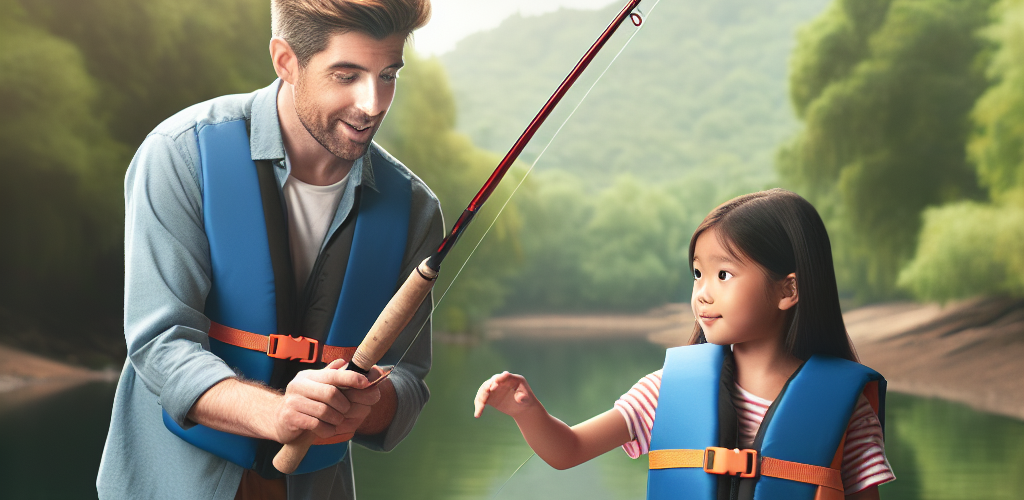Welcome to the family-friendly guide on teaching your children the exciting and rewarding activity of fishing. Our comprehensive guide will walk you through the steps, ensuring a safe and enjoyable learning experience for your young anglers.
Getting Started: The Essentials of Fishing With Kids
Introducing kids to fishing can be a magical experience. Here are some essential tips to get started:
- Choose the Right Location: Start with a local, well-stocked pond that’s known for being kid-friendly. It boosts their chances of catching fish and maintains their interest.
- Safety First: Always prioritize safety by picking spots away from heavy currents and with flat, stable shores.
- Equipment Basics: Use light, manageable gear that fits their small hands. Consider telescopic rods or short, light action rods.
- Legal Requirements: Ensure you are aware of and follow all local fishing regulations, including licenses.
Lessons on the Water: Teaching Fishing Step by Step
Step 1: Understanding Fishing Gear
Begin with explaining the different parts of a fishing rod: the handle, reel, line, and hook. Demonstrate how each part functions and let your child practice with a non-hooked line.
Step 2: Casting 101
Teach them the basics of casting in an open, safe environment. Practice the overhead cast, which is easier for beginners. Supervise them closely to ensure they don’t swing the hook near others.
Step 3: The Patience of Fishing
Fishing requires patience. Encourage them to sit quietly and wait for a bite. Teach them to watch the bobber and feel the line for any signs of movement.
Step 4: Catching and Releasing
Once they hook a fish, guide them through the process of reeling it in gently but firmly. Demonstrate how to handle and release the fish safely back into the water, stressing the importance of conservation.
Advanced Fishing Skills for Kids
As they grow more confident, you can introduce more advanced techniques:
- Using Different Bait: Show them how to use various types of bait and lures, explaining the best situations and fish species for each.
- Understanding the Ecosystem: Teach them about different fish species, water bodies, and how to fish responsibly within the ecosystem.
- Weather and Environment: Help them understand the effects of weather on fishing and what to look for when planning a fishing trip.
Safety Tips for Young Fishers
- Personal Flotation Devices: Kids should always wear life jackets when near the water, regardless of their swimming abilities.
- Handling Equipment: Teach them how to handle hooks and other sharp objects safely. Consider using barbless hooks for extra safety.
- Sun Protection: Always apply sunscreen, wear hats, and use sunglasses to protect from sun overexposure.
- Hydration and Snacks: Keep plenty of water and healthy snacks handy to maintain their energy and hydration levels.
Creating a Positive and Fun Experience
Ultimately, the goal is to make fishing a fun and exciting activity, so consider the following:
- Involve Them in Planning: Let kids be part of the planning process, such as choosing the fishing spot or selecting bait.
- Celebrate their Success: Every catch, no matter the size, deserves celebration and encouragement.
- Take Breaks: Don’t overextend the fishing day. Keep sessions short and sweet to match their attention spans.
- Share Stories: Enhance their enthusiasm by sharing stories of your fishing adventures, emphasizing the joy of spending time together in nature.




